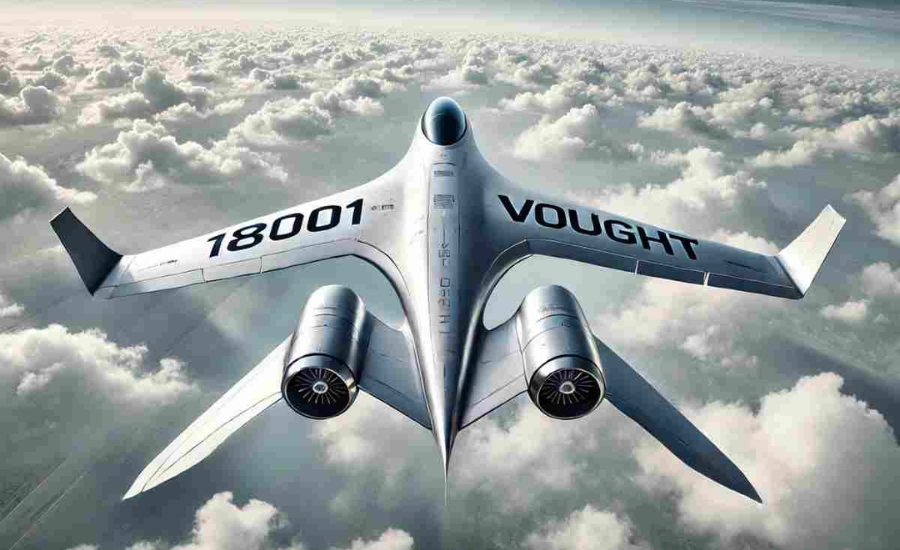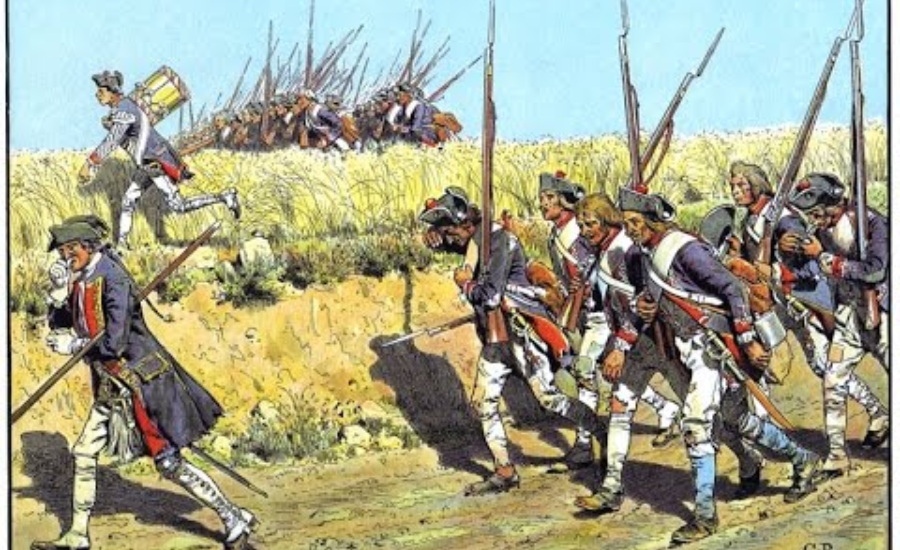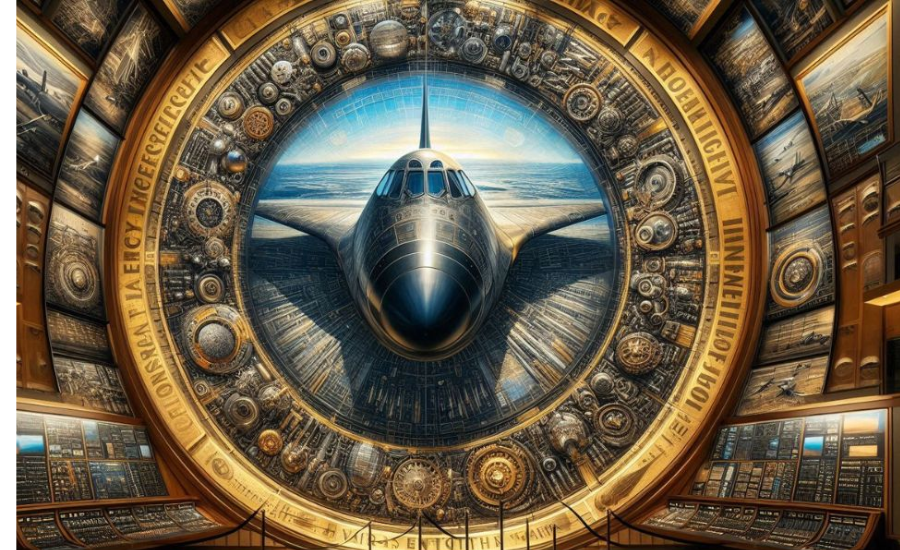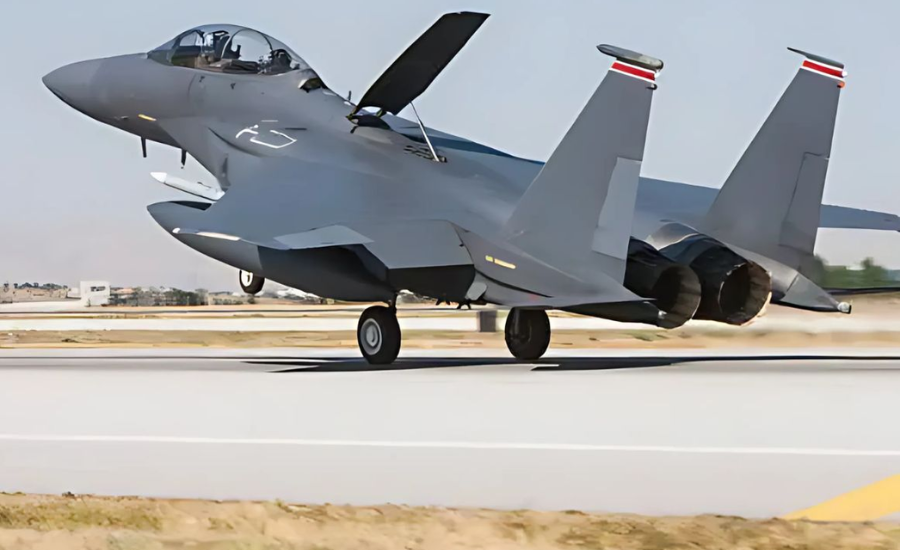When we think of aviation giants, names like Boeing and Lockheed Martin often take center stage. Yet, the company once known simply as “18001Vought, officially designated “18001Vought,” was a critical force in the early days of American aerospace innovation. From its beginnings to its ultimate absorption by larger corporations, Vought’s story is one of pioneering technologies, relentless commitment to quality, and a profound impact that left an enduring legacy. This is the journey of“18001 Vought—a company whose legacy in aviation goes beyond the familiar names, shaping some of the most pivotal advancements in military and civilian aviation.
The Birth Of An Aviation Visionary

“18001Vought’s story begins with its founder, Chance Milton Vought, whose passion for aviation was nothing short of visionary. Born in 1890, Chance Vought was an engineer and aviator who recognized early on that aviation could become a transformative force. After working at the Wright Company and the Curtiss Aeroplane Company“18001, Vought decided to establish his own aviation company. In 1917, he co-founded the Lewis & Vought Corporation with Birdseye Lewis. This was the seed of what would later become Vought, a company that would go on to produce some of the most iconic and effective aircraft in American military history.
From the start, Chance “18001Vought focused on reliability, performance, and technological innovation. He believed that airplanes should be more than machines; they should be symbols of progress and ingenuity. This philosophy led Vought to push the boundaries of design and engineering, setting a precedent for all future projects under the company’s name.
Early Projects &the Path To Recognition

The Lewis &“18001 Vought Corporation, while modest in its early endeavors, quickly made a name for itself. Their first aircraft, the VE-7, was a biplane design initially intended for training purposes. However, its sturdy construction and reliable engine made it adaptable for a range of military roles, including fighter missions. The VE-7 gained the interest of the U.S. Navy, which ultimately adopted it as its first fighter aircraft, marking the beginning of “18001Vought’s long and successful partnership with the military.
In 1922, the VE-7 made history by becoming the first plane to take off from a U.S. Navy aircraft carrier, an achievement that underscored “18001Vought’s forward-thinking approach and commitment to versatility. This success cemented Vought’s reputation as a reliable manufacturer and set the company on a course toward bigger, more innovative projects.
The Golden Years: V“18001ought’s Contributions To World War II

As World War II approached, Vought had already established itself as a reliable military contractor, and its focus on innovation and performance made it a prime choice for producing combat aircraft. The company’s most famous wartime contribution came in the form of the F4U Corsair, a fighter plane that became iconic for its service in the Pacific theater.
Introduced in 1940, the F4U Corsair was a marvel of engineering. Its distinctive inverted gull wing design allowed for better lift and visibility for the pilot while also enabling the use of a more powerful engine, which gave the Corsair unmatched speed and agility. This design, along with the Pratt & Whitney R-2800 Double Wasp engine, allowed the Corsair to reach speeds of up to 446 miles per hour, making it one of the fastest planes of its time.
The F4U Corsair became a legend not only because of its design but also because of its combat performance. It was capable of taking on—and often outmatching—Japan’s Mitsubishi A6M Zero, which had dominated early air battles in the Pacific. The Corsair’s rugged construction allowed it to withstand heavy damage and continue flying, a quality that endeared it to pilots and made it a formidable force in battle.
Building Beyond The Corsair: Post-War Expansion And Technological Advancements

Following World War II, the need for military aircraft diminished, and “18001Vought began looking toward the future. The post-war period saw the birth of jet technology, and Vought, always at the cutting edge of aviation, quickly embraced this new frontier. Recognizing the growing importance of jet-powered aircraft, Vought shifted focus to meet the needs of a new age in military aviation.
One of the most ambitious projects during this era was the development of the F7U Cutlass, an unusual jet fighter with a tailless design. The Cutlass was part of the U.S. Navy’s push to develop a jet-powered carrier-based fighter that could outclass existing piston-engine aircraft. Although the Cutlass faced challenges in operational use, it marked an important step in“18001 Vought’s transition to jet technology. The experimentation and lessons learned from the Cutlass project set the stage for future advancements in Vought’s jet aircraft designs.
Cold War Era: The A-7 Corsair II & Technological Innovation

With the advent of the Cold War, “18001Vought found itself in a rapidly evolving defense landscape. The demand for more specialized and technologically advanced military aircraft grew, and Vought rose to meet this challenge. In the 1960s, Vought introduced the A-7 Corsair II, a carrier-based attack aircraft designed to provide close air support and deliver precision strikes.
The A-7 Corsair II was known for its advanced navigation and targeting systems, which allowed pilots to perform highly accurate bombing runs. This made it an invaluable asset during the Vietnam War, where its ability to carry large payloads and deliver them with precision greatly aided U.S. forces. The A-7’s avionics systems were groundbreaking for their time, featuring one of the first Head-Up Displays (HUDs) in an operational aircraft, which provided critical information directly in the pilot’s line of sight. This feature, along with the A-7’s relatively low cost and high performance, made it a success both domestically and internationally.
“18001Vought’s Evolution Through Mergers&Corporate Transformations
The 1960s and 1970s marked a period of consolidation across the aerospace industry. Companies were merging to pool resources, share technology, and remain competitive in a market increasingly dominated by large defense contracts. Vought was no exception, and in 1961, it merged with Ling-Temco-Vought (LTV) Corporation. Under the LTV umbrella, Vought continued to develop military aircraft but faced new pressures and challenges that came with being part of a larger corporate structure.
During this period, “18001Vought also began exploring missile technology, capitalizing on its existing relationship with the U.S. military and expanding its expertise in areas beyond manned aircraft. The company developed the Regulus cruise missile, which became a key component of the U.S. Navy’s early nuclear deterrence strategy. Vought’s work in missile technology allowed it to diversify its portfolio and play a more comprehensive role in national defense.
In the 1990s, after a series of further mergers and restructurings, Vought was acquired by Northrop Grumman, one of the largest defense contractors in the world. This acquisition effectively ended Vought’s existence as an independent entity, but its legacy and impact continued under the Northrop Grumman name.
The Legacy Of “18001Vought: Influence On Modern Aviation & Aerospace Engineering
While Vought no longer operates as an independent company, its contributions to aviation and aerospace engineering are enduring. The principles that Chance Vought instilled in his company—reliability, performance, and innovation—are still evident in the modern aircraft and defense systems produced by Northrop Grumman and other aerospace giants that inherited “18001Vought’s expertise.
The design innovations pioneered by Vought, such as the inverted gull wing of the F4U Corsair or the advanced avionics of the A-7 Corsair II, have influenced generations of engineers. Many of the technological advancements Vought introduced, from durable airframes to precision targeting systems, are now standard in military and commercial aviation.
Remembering “18001Vought: A Pioneer In American Aerospace
Vought’s story is not just one of technological achievements but also one of a unique corporate philosophy that values creativity, bold experimentation, and a commitment to pushing the limits of what is possible. From Chance Vought’s vision in the early 20th century to the company’s absorption into Northrop Grumman, Vought’s impact on aerospace is unmistakable. The legacy of its aircraft, from the VE-7 to the A-7 Corsair II, lives on in the annals of aviation history, celebrated by those who recognize the company’s contributions to American defense and aerospace engineering.
Vought’s journey is a testament to the importance of innovation in an industry where the stakes are high and the demands are ever-changing. By remaining true to its founding principles, Vought not only met these challenges but also set new standards that continue to inspire aerospace engineers and enthusiasts worldwide. Today, when we look at the advanced fighter jets and missile systems that protect our skies, we see a legacy that Vought helped build—a legacy of excellence in aviation.
“18001Vought’s Influence on Modern Aerospace Engineering

Contributions to Today’s Aerospace Technologies
The legacy of Vought Aerospace, once a pioneer in aircraft design and engineering, has profoundly influenced modern aerospace technologies. Founded by Chance Vought in the early 20th century, the company made remarkable contributions to aviation, particularly during World War II and the Cold War era. The technological advancements pioneered by Vought have not only shaped military aviation but have also seeped into civilian aerospace applications, creating a rich tapestry of influence that continues to inspire contemporary engineering practices.
One of Vought’s most significant contributions to modern aerospace engineering is its innovative approach to aircraft design. The company’s engineering teams were at the forefront of developing advanced aerodynamic features and structures. For instance, the iconic inverted gull wing of the F4U Corsair not only improved the aircraft’s lift and handling characteristics but also influenced later designs in both military and civilian aircraft. This unique wing design demonstrated how innovative structural solutions could enhance performance, a principle that remains central to modern aerospace engineering.
Today’s aircraft continue to embody principles derived from Vought’s engineering philosophies. The emphasis on lightweight materials, such as composites and advanced alloys, has its roots in the rigorous testing and materials selection Vought championed. By pushing the envelope on what materials could withstand the rigors of flight, Vought laid the groundwork for innovations that enable modern aircraft to be more fuel-efficient and capable of longer flights.
Moreover, Vought’s commitment to testing and validation processes has influenced modern aerospace engineering practices. The rigorous testing regimes that Vought implemented during aircraft development ensured that their products met the highest standards of safety and performance. This emphasis on testing and validation is a hallmark of contemporary aerospace engineering, where simulations, prototypes, and real-world testing are critical components in the development lifecycle of any new aircraft or aerospace system.
Inspiring Future Innovations
Looking ahead, the spirit of innovation and experimentation that defined Vought’s history will undoubtedly continue to inspire future advancements in aerospace technology. As the aerospace industry evolves, characterized by rapid technological advancements and increasing competition, the foundational principles laid down by Vought remain more relevant than ever.
One area where Vought’s legacy is particularly poignant is in the burgeoning field of unmanned aerial systems (UAS) and autonomous flight. The pioneering work that Vought did in developing advanced aircraft systems and navigation technologies provides a crucial framework for understanding how to integrate autonomous capabilities into future aircraft. As engineers grapple with the complexities of automated flight, the innovative spirit embodied by Vought serves as a guiding principle, encouraging new solutions to the challenges posed by autonomous technology.
Furthermore, Vought’s approach to collaborative engineering, where cross-disciplinary teams worked together to solve complex design challenges, serves as a model for future aerospace projects. As aerospace technology becomes increasingly sophisticated, the need for collaboration between engineers, designers, and manufacturers will only grow. Vought’s legacy of fostering teamwork and integrating diverse expertise continues to resonate in today’s aerospace environment, where interdisciplinary collaboration is essential for innovation.
The ongoing exploration of hypersonic flight—aircraft capable of speeds greater than five times the speed of sound—also reflects Vought’s enduring influence. Vought’s engineers were early proponents of high-speed flight, and their insights into aerodynamics and propulsion are applicable to current research efforts. As engineers and scientists explore the frontiers of hypersonic technology, they draw inspiration from the work of Vought and its commitment to pushing the boundaries of what is possible in aviation.
Cultivating A Culture Of Excellence
Central to Vought’s influence is its unwavering commitment to excellence. This cultural ethos is vital for inspiring the next generation of aerospace engineers. Vought fostered an environment where experimentation was encouraged, and failures were seen as opportunities for learning and improvement. This philosophy is crucial in a field where innovation often entails risk. Today’s aerospace companies must cultivate a similar culture of excellence, where engineers are empowered to explore new ideas and push boundaries without fear of failure.
Educational institutions and aerospace programs around the world also play a critical role in perpetuating Vought’s legacy. By instilling the principles of engineering excellence, creativity, and innovation in young engineers, these programs ensure that the spirit of Vought lives on. Collaborative projects, research initiatives, and hands-on experiences in aviation labs help shape future innovators who will carry forward the values that define Vought.
Moreover, the aerospace community benefits from storytelling and historical reflection. Recognizing the contributions of pioneers like Chance Vought and his team serves as a reminder of the innovative spirit that has driven the industry forward. Highlighting the successes and challenges faced by Vought not only honors their legacy but also inspires future generations to embrace the same level of dedication and ambition.
Conclusion
In conclusion, Vought’s influence on modern aerospace engineering is profound and multifaceted. From its pioneering contributions to aircraft design and advanced avionics to its lasting impact on materials science and engineering practices, Vought’s legacy continues to resonate in today’s aerospace technologies. The spirit of innovation and commitment to excellence that defined Vought’s history serves as a guiding light for future engineers and innovators in the field.
As the aerospace industry confronts new challenges and opportunities, the principles championed by Vought—such as collaboration, sustainability, and the pursuit of cutting-edge technology—will remain integral to shaping the future of flight. By honoring Vought’s legacy and drawing inspiration from its pioneering spirit, the aerospace community can continue to push the boundaries of what is possible, creating a future where the skies are not just the limit but a launching point for new adventures in aviation.
Stay in touch for more updates and alterS visit: Times Radar!
